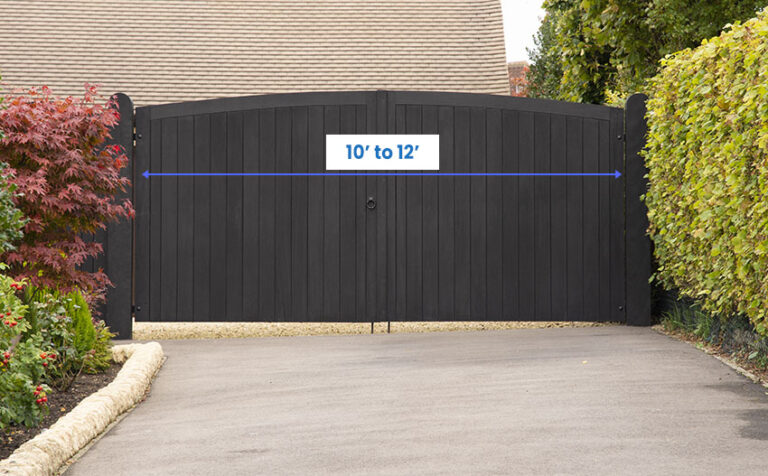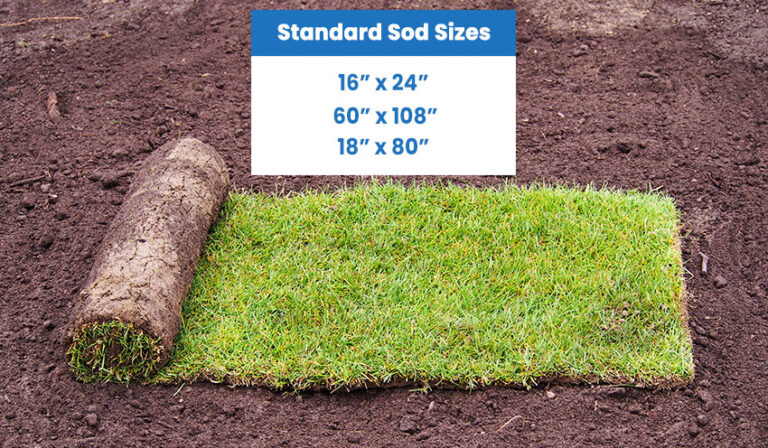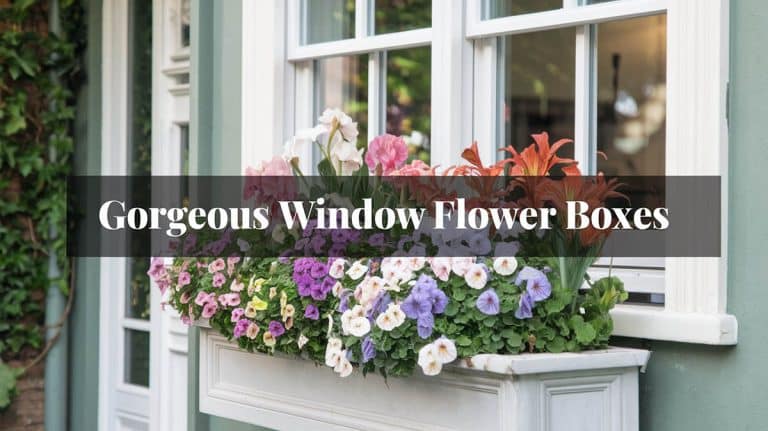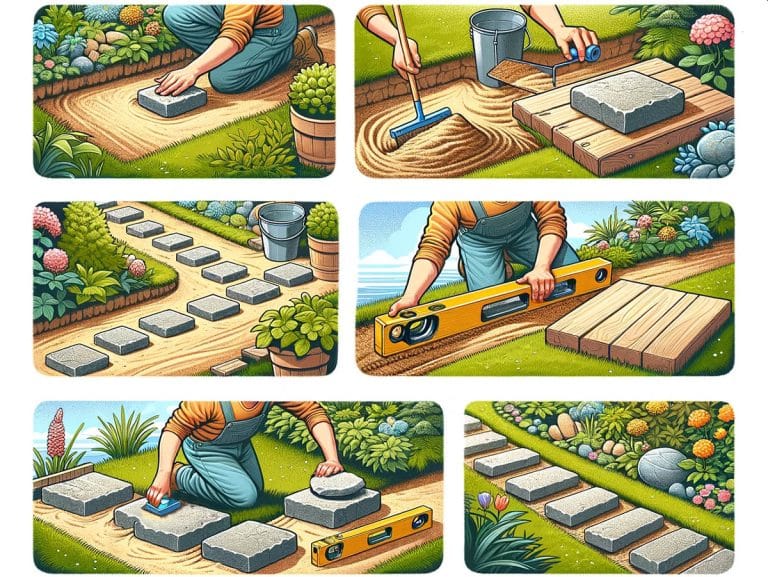Permeable Pavers (Types & Benefits)
Find out about permeable pavers including what they are, different types & materials, benefits, cost, how to install a permeable paver system, and how they differ from non-permeable pavers.
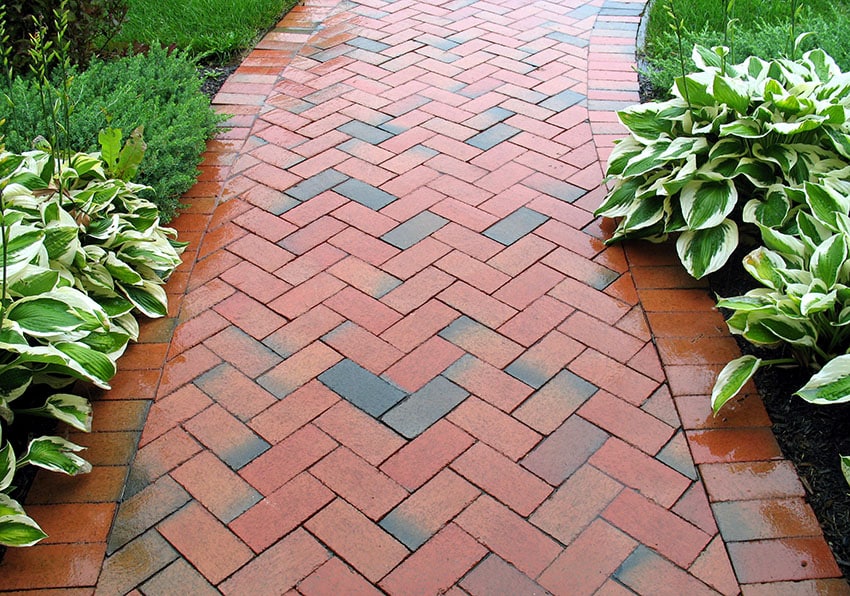
Pavers are versatile units of construction that come in a variety of different materials and styles. Around your house, you might use them to pave your patio, redo your driveway, or upgrade your sidewalks to more elegant walkways. In public areas, they’re often used for roadways or paved walkways.
This feature can elevate your landscape or patio design to a whole new level! Not only are they beautiful, though, but they also offer a lot of benefits when it comes to controlling damage from storm water and flooding.
What Are Permeable Pavers?
Permeable pavers are created with drainage in mind. They are often porous in design and when laid out in a system can allow water to pass through them. They can do this, thanks to wider spaces and joints between the pieces that water can pass through easily.
They are laid in a way to account for water drainage and typically have larger spaces between the pieces to allow water to pass through.
Alternatively, these paving materials may be porous themselves. In these cases, the pattern the paver system is laid out in may not need joints as wide. Because of this, it’s much easier to account for the effects of rainwater on your newly-laid pieces and lessen the runoff.
Types Of Permeable Pavers
These pieces, as mentioned, can be porous by the unit or they may be porous. Thanks to the design of the paver system they’re laid out in. The design you can use for permeability will depend on the materials you choose.
Permeable Concrete Pavers

Concrete pavers are a popular choice when it comes to paver systems. To make these systems permeable, they often rely on space in the joints for water to drain off. As such, the designs largely rely on this interlocking paver systems. Another style is Roman concrete types which are squares or rectangles with softened edges rather than an interlocking pattern.
One huge benefit is the variety of designs that interlocking concrete types can offer. Since they’re interlocking, you can easily create striking patterns during installation but use different colors of concrete in different parts of the pattern. You can even use concrete to imitate other materials like brick.
This also means these types fit well into a variety of decor styles, so you can fit this material into almost any home landscape.
Still, proper installation is crucial with concrete types. Otherwise, you risk the concrete settling and cracking. This is also a risk when it comes to issues like frost cycles which can damage your concrete.
Permeable Grass Pavers
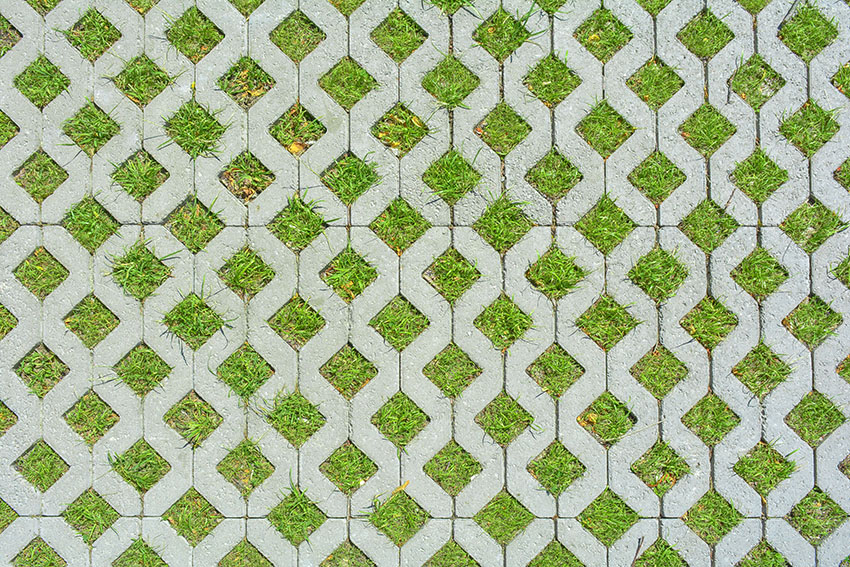
When you’re talking about grass pavers, you aren’t talking about those made from grass. Rather, grass permeable types are a mix of pavers and natural grass growth. This largely has to do with how the system is set up in the pattern.
Most permeable paver systems use small joints. Even when they’re for water drainage, it can sometimes seem as though the joints in these paver systems are as unobtrusive as possible.
Grass permeable types work in a much different way. Instead, they are laid out in a design that often looks like latticework rather than full coverage over the area. This leaves room for grass to grow between the pieces, leaving your landscape below much more visible. This is great if you want to keep some green in your yard while still maintaining some extra erosion control.
Another benefit to this type of paver system is how cost-effective it is. Not only is concrete a relatively inexpensive material but the pattern helps you save on how the number of materials you’ll need to complete this design.
Permeable Brick Pavers
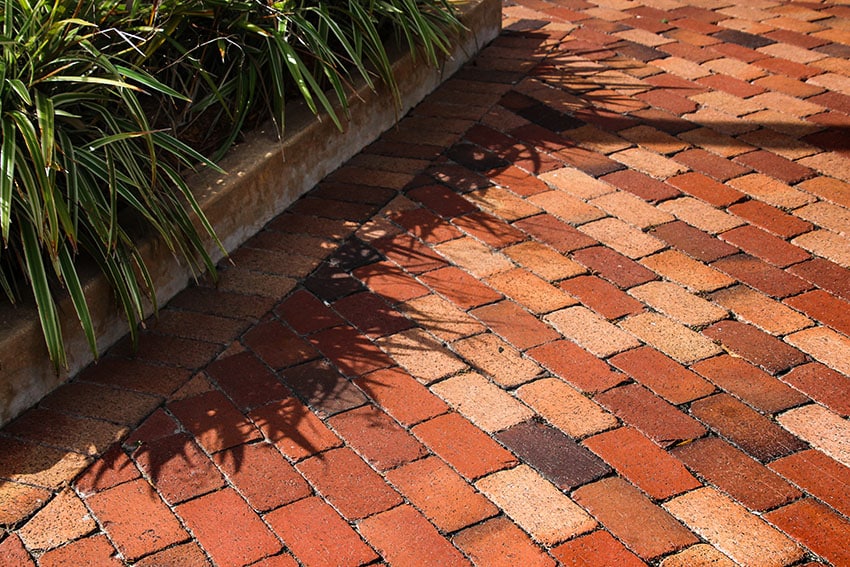
As mentioned, while they aren’t necessarily bricks, brick is one option you have when it comes to materials. Just as with any other brick installation, brick pavers are usually made of clay. However, you can also opt for concrete or aggregate materials styled to look identical to genuine bricks.
These materials are favored for a few reasons. For one, brick is a strong material, so you aren’t in much danger of damaging it. The appearance can last for quite a while thanks to its stain resistance but you’ll need to add sealants to make sure it doesn’t fade over the years.
For permeability, bricks are often laid in a pattern with open joints. While water can get into these joints, other debris can too. For the best results, you’ll want to make sure you keep these joints free of debris and sediment to ensure the system stays as permeable as when you put it in. Porous bricks are available but the bricks themselves can intake sediment, reducing permeability.
Plastic Permeable Pavers
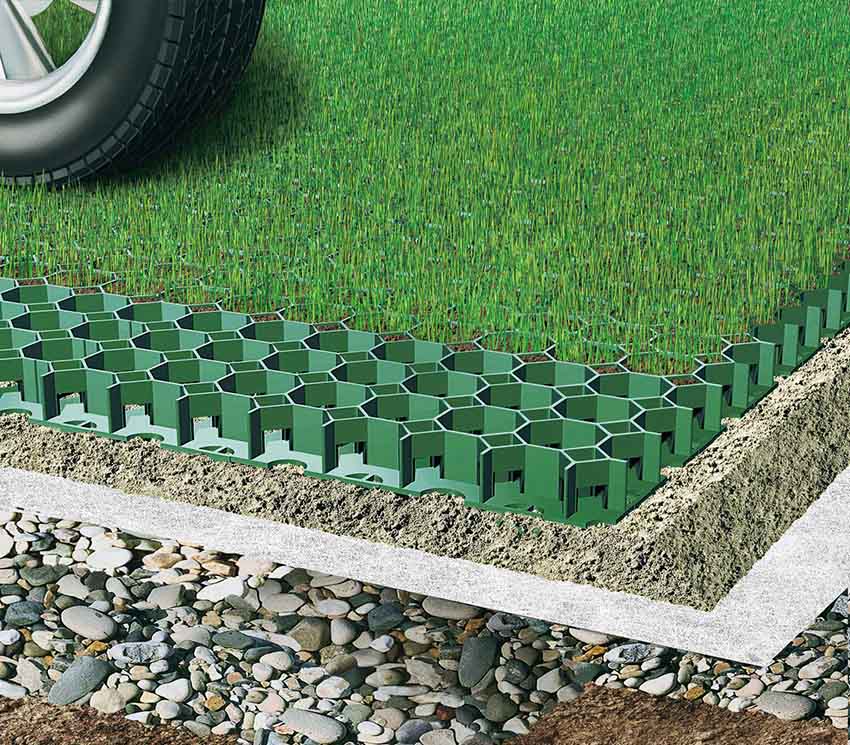
See this permeable paver at Home Depot [sponsored link]
Plastic pavers are another option when you want a permeable paver system. They often look like hollow circles, making them permeable by design. They aren’t usually left fully exposed, though. Instead, the hollow spaces are typically filled with a natural material like grass or gravel. The end result is an even walking surface that can support foot traffic and even driving.
The permeability of this design is one of the biggest benefits here. You can lay it out it naturally offers the benefits of filtering runoff, absorbing storm water, and helping to reduce flooding without worrying about if the overall paver pattern creates enough permeability. Unfortunately, plastic types may not last as long as their concrete or brick counterparts.
Unilock Permeable Pavers
Unilock actually refers to a brand of pavers rather than a specific material. The stone material Unilock relies on is called Uni-Stone by the company which is a type of concrete. However, it comes with plenty of diversity.
The material can mimic a few different textures and the company has Unilock pavers that imitate the appearance of a few different materials, including brick and stone. If you want something to target erosion control specifically, they offer a Dura-Mat that’s permeable alongside more traditional types as well.
All in all, Unilock offers a lot of benefits, including a textured surface to keep them non-slip in the rain.
Truegrid Permeable Pavers
Truegrid is another brand name for a type of paver. At its most basic level, these are plastic products and share their pros and cons.
Truegrid compared their design to LEGO bricks. In other words, these plastic pieces will interlock, creating a grid you can fill in with gravel or sand.
The result of this is a simple paver system that offers support and water control. Like other plastic types, these won’t last quite as long as a material like brick or concrete.
Techo-Bloc Permeable Pavers
Techo-Bloc is a material similar to concrete but with some notable enhancements to fall under the Techo-Bloc name. For one, it’s a stronger material that Techo-Bloc describes as triple the strength of standard concrete you’d pour into place.
What makes Techo-Bloc pieces stand out even more than this is their ability to adapt to various environments. When you work with outdoor building materials, you have to take extra consideration as to how the climate could affect those installations.
To avoid damage, Techo-Bloc products are able to adapt and survive things like a freeze and thaw cycle without much of a problem as long as they’re installed correctly.
This paver system is interlocking but there is enough room for weeds or grass to start to crop up between the pieces. You can avoid this by adding polymeric sand to block this growth between pieces without completely sealing the space off either. You may also need to remove moss if they sit damp and shaded for a while.
Turfstone Permeable Pavers
Turfstone is a type of permeable grass paver system. Much like other grass paver systems, they look like latticework on the ground and grass grows through the cracks.
As a result, these open grassy spots are naturally permeable, allowing water to pass through. TurfStone leaves about 40% of the paver system open for grass, offering plenty of permeability.
Turfstone products are made of concrete, meaning that they’ll last quite a while as well. Plus, the lattice design is great for areas where you need additional stabilization such as on sloped areas.
Permeable Pavers For The Patio
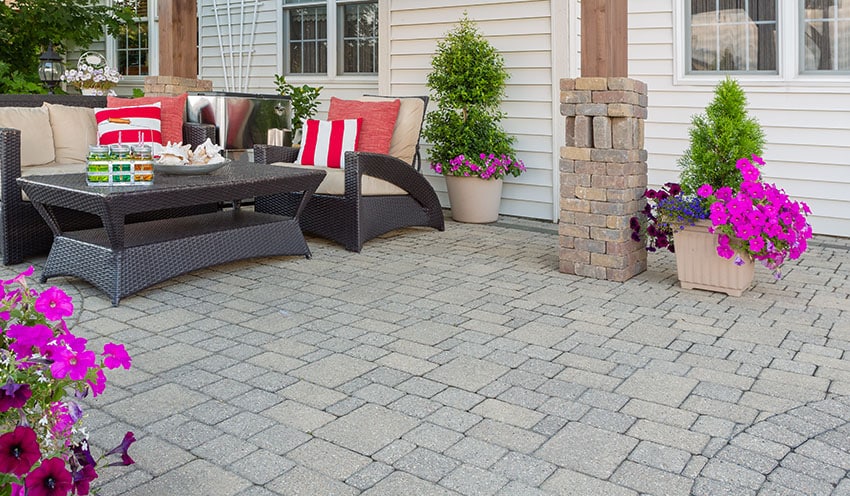
When you’re looking to create a surface for your patio, these pieces are a great choice to set your patio apart. As we’ve seen, you have plenty of options when it comes to style and material.
With plenty of different patterns to create, they set up a situation where you can create a truly one-of-a-kind appearance no matter what your style is.
On top of that, you’ll have all the environmental and practical advantages of these pieces. Visit our paver patio ideas here for more designs.
Permeable Pavers For The Driveway
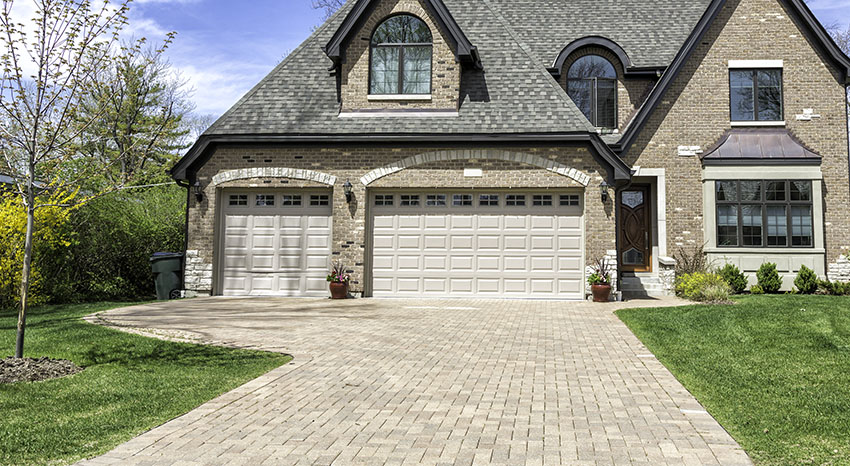
There are a lot of applications for these construction units – you don’t have to stop at your patio! Another great place is the driveway. Most of these can handle foot traffic and vehicle traffic.
The driveway is a particularly great place for these pieces as it’s an area that impermeable paving is often used. A paved driveway offers a clean appearance but using this system will offer more environmental benefits than an alternative paving method like a layer of asphalt. Visit our guide to the types of driveway pavers here.
Permeable Pavers Benefits
The most obvious benefit is that they can elevate aesthetics well when you choose the right design. However, they have quite a few additional benefits to offer you as well.
Water runoff control is a great advantage. Similarly, you can depend on these pieces to offer more help if your yard starts flooding than a non-permeable surface. Since they drain well, they can also reduce the need for additional drainage features in your yard and the surrounding area.
The right types can help to reduce pollution in water runoff. The design naturally helps to filter the water as it passes through and catches some of the pollutants that might otherwise just run off your lawn uninhibited.
Permeable Pavers Cost
Given the wide range of materials and systems you have to choose from, the cost of installing can vary quite a bit. The average overall cost can sit anywhere from $0.50 to $40 per square foot of material. At the higher end, you have custom-made and more valuable materials.
For the most part, though, the average homeowner won’t likely pay the higher end of this scale. The most common materials, as we’ve discussed, include options like concrete, stone, or brick. When it comes to these materials, the average lowers to about $10 to $30 per square feet of materials.
Of course, if you opt for professional installation, this will add to the cost of your new paver system.
How To Install Permeable Pavers
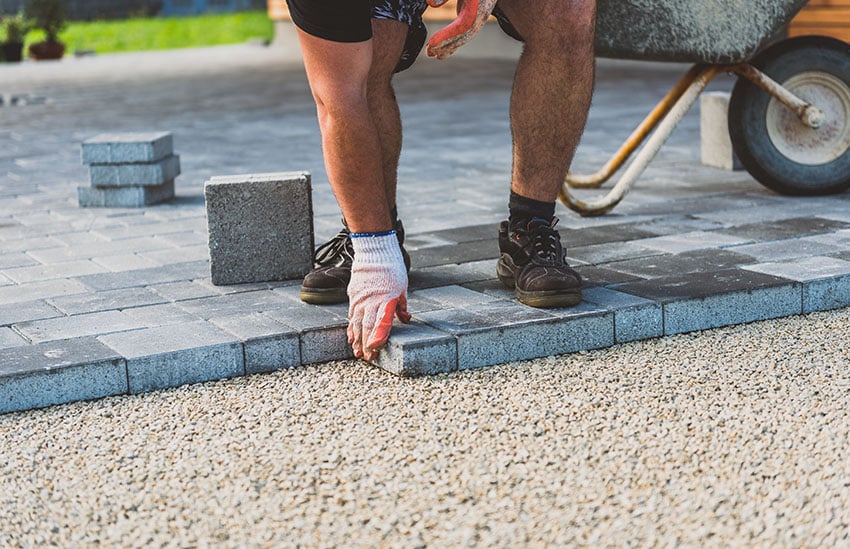
Once you have a general idea of what you want from your paver design and have all your materials ready, you’re ready to install! You can opt for a professional installation too. Before you get started, it’s important to make sure the area you’re paving doesn’t have any structural items the installation might interfere with such as electrical or gas lines.
Marking Out a Plan – When you’re ready, you can mark on the ground how you want the paver system laid out. Marking paint is a great tool for this. Using stakes and string lines, you can make more definite markings and these will help you keep your pieces in the perfect pattern keeping the lines straight.
Preparing the Area – After you’ve marked where you’re new patio, driveway, walkway, or other surface is going, you’ll need to level the area. This prevents an uneven surface. On the now-dampened-down ground, lay a layer of paver base material and level this as well.
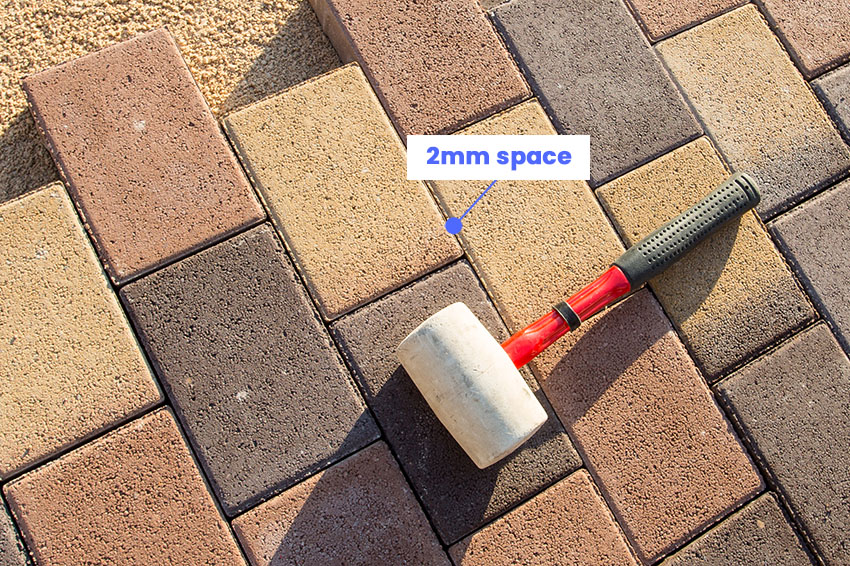
Adding the Pavers – Now, you can add these pieces. This part can vary depending on the pattern you choose but it’s a good idea to start your pattern from an edge rather than try to build out from the center. It’ll be much easier to gauge space and pattern working through it this way. When you lay a paver down, use a mallet to help tap these into place and leave about 2mm between the pieces.
The next step is usually where having an installation team handy can help. You’ll need to compact these pieces, which is usually done with a compactor plate after some jointing sand is spread out.
Once you’re done, you can add sand to the joints but this sand is largely for looks, so choose a complementary color. If the they aren’t pressed against a wall, most projects are finished by restraining the edges. This process is meant to help reduce the pavers spreading over time.
What Are ADA-Compliant Permeable Pavers?
ADA-compliance means that people with disabilities can walk across a firm, stable surface without much of a problem. Additionally, the surface should be slip-resistant. This way, you’ve covered both the risk of tripping or slipping which is safer for everyone.
When you have a flat surface made with these pieces, look to the joints for ADA compliance. If the joints are more than ½” then you’ll need to narrow them to comply with ADA standards. Joints more than ½” increase the difficulty in universally navigating the walkway.
Are All Pavers Permeable?
No, not all pavers are permeable surfaces. This paver systems allows rain water and other moisture to filter through them, either through the material or widened joints. Of course, not every paved surface offers this.
A surface paved traditionally may not be permeable. As a result, instead of filtering through the paver system, the water just runs off of the sides, creating more runoff when it rains. This is often seen on poured paved surfaces such as asphalt roads but there are instances of impermeable types as well.
If you want to control aspects like rainwater runoff and erosion, this option is much better in the long run. Impermeable options increase issues like runoff and erosion, putting them at a comparative disadvantage.
What Is The Difference Between Pavers And Permeable Pavers?
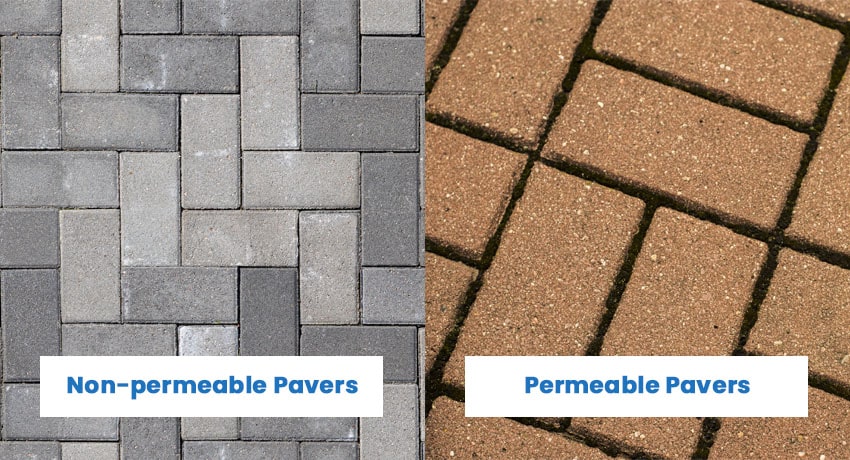
The thing that sets these pavers apart from other types is their permeability. This is their ability to allow water through rather than simply running off the paved area, which offers a lot of benefits. This includes those made of permeable materials as well as paver systems set up with wide enough joints to allow water to pass through.
This offers a lot more control over erosion, rainwater runoff, and they’re generally a more Eco-friendly option. They also tend to repair better than a paved option like an asphalt driveway since you can repair individual pieces rather than completely repaving.
See more related content in our article about the types of pavers here.


![129 Fence Designs & Ideas [Front & Backyard Styles]](https://57edf196.delivery.rocketcdn.me/wp-content/uploads/2016/11/horizontal-wood-fence-with-wood-pergola-768x504.jpg)
